Cavern QuickEQ (Home version) user guide
Step 3: Tuning
After the measurements are finalized, Cavern QuickEQ evaluates them and displays the recorded sound profile on the left of the screen. The simulated result after corrections is on the right.
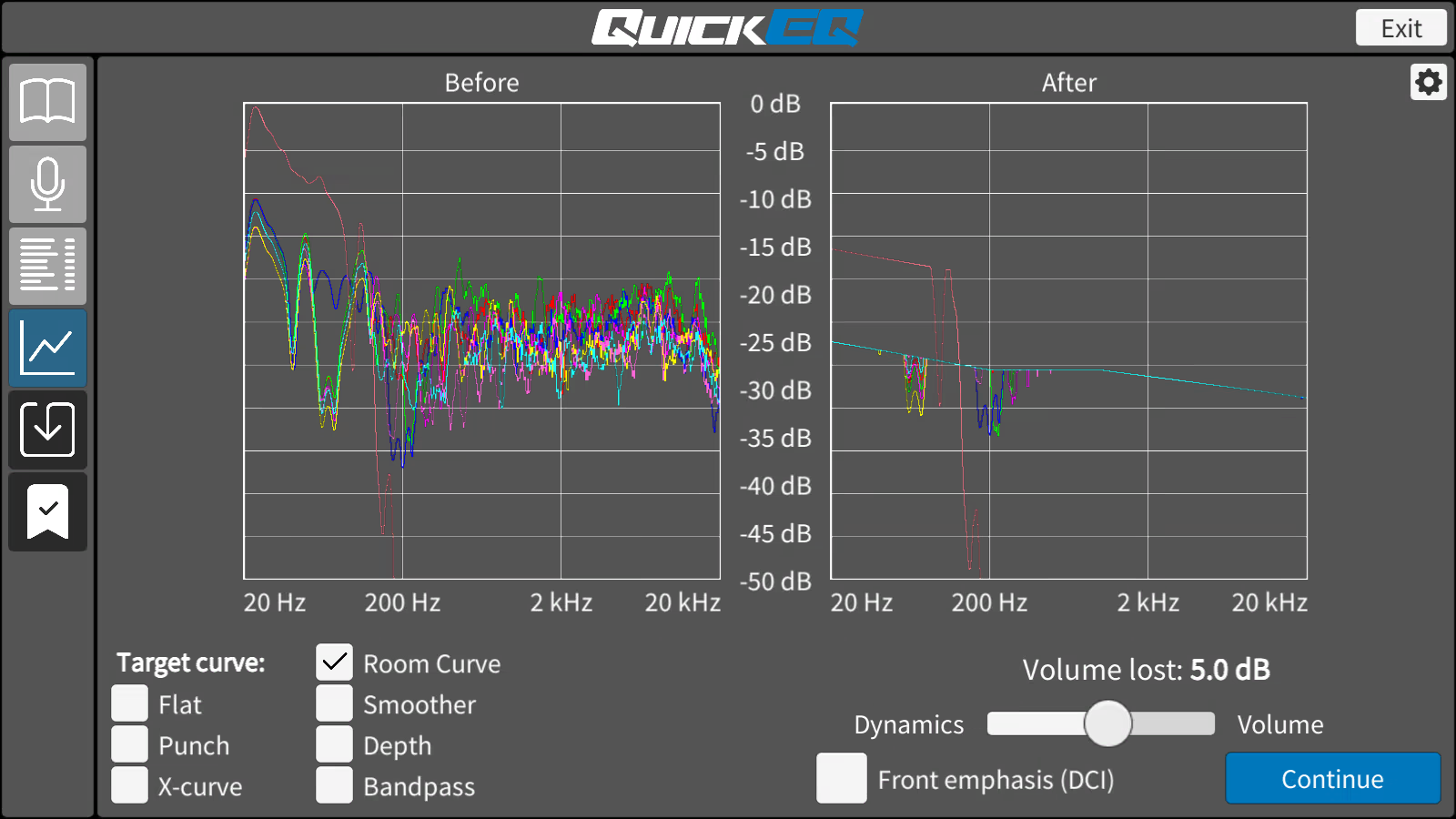
These graphs display frequency responses. They tell you how your system sounds without and with QuickEQ. If you want to learn more, and not just let QuickEQ do its best, click here.
The cogwheel on the top right opens advanced options for technicians working with QuickEQ. It is not part of the easy opeation of QuickEQ.
Target curve
The result will follow this curve as close as possible:
- Room Curve - Most rooms naturally amplify the bass and lower the treble. This curve aims to mimic that sound, resulting in the closest to life sound for most users.
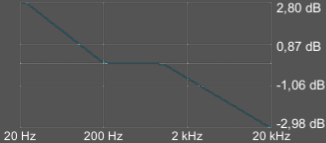
- Flat - No additional EQ is applied, each frequency response is flattened as much as possible.
- Smoother - This option does not calibrate the system to any standard curve, only differences between channels are removed, making them sound uniform to each other, creating a good sound stage. This makes the Smoother curve work without a calibrated microphone.
- Punch - Chest slams are caused by swiftly rising lower bass. This curve forces exactly that, resulting in stronger chest slams, but also in a louder bass.
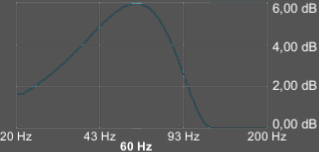
- Depth - Adds a ramp to the subwoofer that keeps increasing the volume down to the end of the human hearing range. This will sound like your subwoofer can show more deep notes than it is actually able to. Bass is greatly amplified.
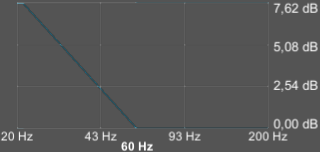
- X-curve - The standard cinema curve for large rooms, but will sound bad in small rooms. Nearly all movies were mixed to this target and all cinemas are configured to this curve. It's optimized for outdoor use by greatly suppressing high frequencies.
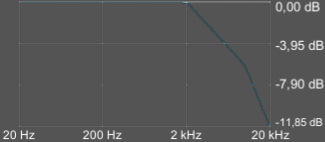
- Bandpass - Recommended for stage use, where the subwoofer level is changed all the time. This curve makes the transition to the subwoofers seamless at any volume difference if crossovers are not used. This curve is only applied to subwoofers.
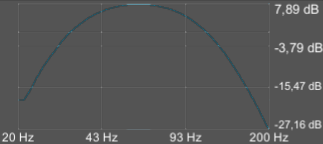
Volume lost
Generally, the upper volume level is fixed, and is used by most content. EQ is usually done at a reduced volume so this upper level isn't hit at frequencies where the EQ amplifies the sound. If EQ was done at the input level, and it would amplify a sound over the peak content volume, compression happens, resulting in a decreased dynamic range. However, it's safe to assume that if we only increase the volume just a little, and only a handful of frequencies pass the peak level, it's highly unlikely that it will ever result in compression, as all those frequencies should be played with a signal at peak volume. This slider can find a sweet spot between having absolutely no compression and having the original volume:
- Dynamics - 100% of the dynamic range is preserved and no single frequency could result in a higher than peak volume. The volume loss is likely high, and will require serious amplification to get back to normal listening levels. For high-end theaters and installations, this is the recommended option.
- Volume - The original volume is preserved at any cost in dynamic range.
This is only an advertisement and keeps Cavern free.
Front emphasis (DCI)
Use standard commercial cinema levels. All surround and height channels will receive a 3 dB attenuation. This is only recommended in the home if you find the surrounds too much.
Continue
Finalize the tuning and advance to the next step. Click this button and select the Step 4: Export tab on the top of this page.